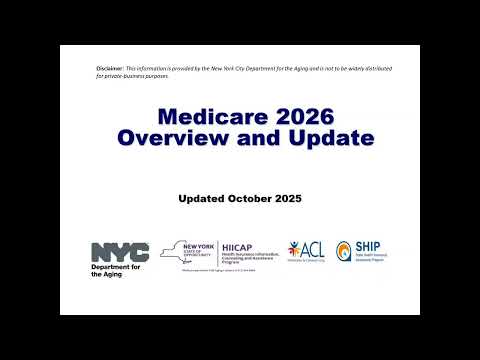
Testimony Submitted to The Empire State Development Corporation (ESDC) Regarding the Proposed One Bryant Park Land Use Improvement Project on December 22, 2003
Liz Krueger
July 12, 2010
I am grateful to the Empire State Development Corporation for the opportunity to submit a statement raising concerns I have with the proposed One Bryant Park Land Use Improvement Project. While the project offers several valuable amenities and sets a standard for the development of “Green” buildings, it also raises serious questions regarding the use of eminent domain, corporate subsidies, and New York’s overall strategy for economic development. I have several additional concerns regarding the project’s environment impacts on the surrounding area, and am disappointed that the city’s mechanism for identifying and mitigating these impacts, ULURP, is being circumvented.
Eminent Domain
It goes without saying that eminent domain is one of the most awesome powers government has at its disposal. In turn, it is potentially dangerous and must be subject to careful scrutiny, especially when it is used as a tool in urban redevelopment schemes. As you know, land being taken as part of a redevelopment plan must first be declared “blighted,” which has always been a controversial step in itself since there is often disagreement regarding what blighted means and looks like. 42nd Street and Sixth Avenue is simply not a blighted neighborhood, and is in no danger of becoming one. While I do not doubt that The Durst Organization had difficulty acquiring all of the required lots to assemble a footprint that meets the needs of Bank of America, the unwillingness of property owners to sell their parcels and displace small businesses does not constitute a failure of “private market forces” as indicated in ESDC’s “basis for blight findings.” As it turned out, under the pressures exerted by impending eminent domain proceedings, Durst was able to purchase the final two parcels needed for the building last week. This does not change the fact that the justification for using eminent domain is fundamentally flawed. If anything, the sale of this land should obviate the need for condemnation of the site.
Underdevelopment is simply not justifiable criteria for the designation of blight and the use of condemnation, and “maximizing the development potential” of the project location does not qualify as a public service, even by the US Supreme Court’s elastic definition of “a conceivable public purpose” as to when eminent domain is allowed. I am concerned that the true reason ESDC is using condemnation is to simply enable the generous benefits package being offered to the Durst Organization and to be excused from City zoning and review procedures, since the fact that he already owns all the required property should make this action moot. The long-term policy implications are troubling. I believe that we must re-evaluate the use of eminent domain throughout our City and State, since it has increasingly been used to the benefit of private corporations. The practice of condemning privately owned property for a corporation’s gain is not only detrimental to existing small businesses, but it raises serious concerns with regard to the original purposes of eminent domain.
Economic Development and Liberty Bonds
What is perhaps most troubling about the use of eminent domain for this project is that it enables a benefits package that constitutes a misallocation of Liberty Bond funds in the context of a questionable overall strategy for economic development. New York City should reassess the commonplace usage of discretionary funding and subsidies for corporate retention deals. Over the past six years, more than $2 billion of New York City and New York State funds have gone to some of the world’s most profitable companies in the name of job retention. Our economic development strategy has been a defensive policy that reacts to individual companies’ threats to leave, and has resulted in an overemphasis on the finance and real estate industries. In fact, with the overwhelming majority of retention deals being in the financial services, banking, and insurance, they almost exclusively focused on Manhattan’s central business districts. According to a recent report issued by Center for an Urban Future entitled Engine Failure, these policies have destabilized the city’s economy, ignored the employment needs of most residents, and failed to develop a comprehensive workforce development strategy. We need to foster an economic development strategy that focuses on a more diverse economy and a broader geographic base.
A retention deal that spends hundreds of millions of dollars subsidizing commercial development in mid-town Manhattan, one of the most desirable office locations in the world, certainly does not achieve this goal. Manhattan currently has unprecedented levels of vacant office space. While the terrorist attacks of September 11th had an obvious impact upon vacancy rates throughout New York City, vacancy rates had been on the rise for almost a year before. Between the third quarters of 2001 and 2002, the vacancy rate shot up by 55%. According to the September 2003 Colliers Manhattan Office Market Report, the Midtown Class A vacancy rate climbed to 11%. In other words, there are about 148.5 million square feet of available Class A space in Midtown Manhattan. With the proposed addition of 2.1 million square feet of space at One Bryant Park, a million square feet will be added to that vacancy rate due to the fact that BoA is only occupying half of the available space.
ESDC justifies this project by reassuring New Yorkers that the office vacancy rate will improve with the rest of the economy. This does not necessarily appear to be the case. Recent consensus among state, city and federal government economists indicates that after two and half years of contraction, the New York City economy is on the road to recovery. A New York Times article published on December 11th, 2003, reported that the gross city product, unemployment rates, Wall Street profits, number of private sector jobs, hotel occupancy rates, and airport passenger arrivals all indicate that the economy is improving. However, the article noted that the Manhattan office vacancy rate was strangely not following these other trends, rising almost 2% over the past year. As long as projects like One Bryant Park continue to subsidize large-scale commercial development in attractive business centers, it is hard to imagine the vacancy rate significantly improving. Even if the office market eventually improves with the economy, real estate experts predict that it will be years before there is enough demand to fill all the space available now, much less any new office towers.
The Durst Organization and Bank of America will be exempt from paying real property taxes, mortgage recording tax and sales & uses taxes from 2008 until 2028. While they will be required to disburse payment in lieu of taxes (PILOT), New York City will lose out on millions of dollars in potential tax money. Furthermore, BoA recently merged with FleetBoston, and as of today there has been no information provided about the lost jobs in New York City due to their merger. According to several studies, a significant percentage of the firms that have benefited from retention deals were acquired by other companies and consequently eliminated many jobs shortly after taking advantage of the incentives. Incidentally, BoA was in a similar situation in the early 1990s when they asked for $12 million in sales-tax abatements in exchange for a promise to retain 1,700 employees at the World Trade Center. A few years later, the sales-tax deal was terminated when BoA merged with another bank and laid off 800 employees. I am obviously concerned that BoA’s recent merger will result in a loss of jobs, as mergers and consolidations in the banking and financial sectors have been rampant in recent years, forcing large corporations to cut back operations in the wake of plunging stock prices.
With these significant reservations in mind, I believe the use of Liberty Bonds to broker this type of deal is a misallocation of this funding. This bond issue would be the biggest yet under the Liberty Bond program, which gave New York State and New York City the right to sell $8 billion in tax-exempt securities to spur development after the World Trade Center tragedy. I applaud the federal government for recognizing that some percentage of these resources would need to be allocated outside Lower Manhattan, since the entire city suffered after September 11th. However, there are certainly better ways to use these limited resources and parts of the city that more desperately need this type of investment. It is bad enough that New York State is functioning like a real estate speculator on behalf of large corporations and developing a midtown office building in spite of market demands, but the use of $650 million in Liberty Bonds to accomplish this is unacceptable.
One suggestion that I would like to propose to the ESDC is to put more energy into creating affordable housing. Good Jobs New York has put forth an excellent proposal that would charge commercial developers a fee for the usage of Liberty Bonds that would go toward the construction of affordable housing. At present, housing developers must pay a fee to the City for the privilege of receiving Liberty Bonds, and this money goes into such a fund. A 3% fee on the bond sale requested by the Durst Organization would raise $19.5 million for low and moderate-income housing that would be build throughout the city. This type of initiative would show an increased commitment on behalf of the ESDC to address the lack of affordable housing in New York City.
Since ESDC is financing this project, it should ensure that BoA employees provide a living wage and affordable health care for all its workers. Sub-standard wages leave many employees dependent on government assistance, which is a cost to the government not factored into the cost-benefit analysis of this project. New York City implemented a law last year that requires companies receiving certain contracts from the City to provide workers with a living wage and health benefits, as defined in the law. These standards should be enforced for BoA and any other firm receiving this type of generous benefits package in New York City.
Environmental Impacts
I have several concerns regarding the environmental impacts of this project, especially since ESDC has chosen to exercise its override powers regarding the New York City Zoning Resolution and the New York City Landmarks Law, and will not be subject to the City’s ULURP process. In the “Open Space” analysis, I was disappointed by the Environmental Impact Statement’s conclusion that “since the area already experiences a deficiency in the open space ratio and would continue to do so absent the proposed project, the additional change in the open space ratio is not considered a significant adverse impact.” I consider this kind of reasoning to be disingenuous and inadequate. As acknowledged in the EIS, this neighborhood is dramatically underserved in terms of open space. While I am aware that this project will be contributing 14,649 square feet of open space to the area, it is also adding almost 6,000 workers, and the current conditions should not relinquish the developer from mitigating the full impacts of this project.
I also have concerns regarding the traffic analysis in the EIS. The analysis indicates that this project will generate hundreds of additional vehicle trips per day, resulting in significant adverse traffic impacts at 22 intersections during the AM peak hour, and at 16 intersections during the midday and PM peak hours. Despite these impacts, the only mitigations suggested are “signal timing and intersection approach daylighting measures,” and some restriping along Fifth Avenue. I am somewhat alarmed by the EIS’s argument that all traffic impacts can be mitigated through a series of generic solutions which the developer has little control over. Finally, I was disappointed to see that the project would cast shadows over the plazas at 1133 and 1114 Sixth Avenue during the afternoon hours in the Spring. I believe the traffic and shadows analyses raise questions regarding the proposed size of the project
Amenities
In many respects, this project offers exciting possibilities for enlightened development. From a transportation planning perspective, I am extremely pleased by the underground connection for subway riders linking the Sixth Avenue/42nd Street Subway Station to the Seventh Avenue Times Square Subway Station, which will be maintained by the developer. This is an invaluable amenity that will improve the commutes of thousands of subway riders. Since the MTA is in charge of determining how the connection is operated, it is important for the MTA to require the developer to maintain high security standards and to keep the connection open as much as possible.
Since this project is overriding several provisions in the NYC Zoning Resolution in regard to height and bulk, I would expect the developer, in good faith, to provide significant public space to simulate the plaza bonus such a development would require. I am pleased that the developer is providing a through-block pedestrian connection, a 3,500 square foot “L”-shaped plaza with trees and benches, and a 3,500 square foot “urban garden room.” I want to note that the quality of plazas vary tremendously in my district, with some functioning as inclusive and vibrant physical and social environments, and others as barren and often privatized-by-management spaces that diminish the spirit underlying their public function. In fact, Harvard University professor Jerold S. Kayden surveyed “privately owned public spaces” in Manhattan, most of which are in my district, and discovered that 41% were in violation of their original agreements (Privately Owned Public Space: The New York City Experience, 2000, John Wiley & Sons, Inc.). Many buildings use the space to store garbage or to host cafes, while others lock the gates at erratic times or simply neglected to keep the spaces clean enough to allow for public use. It is essential for the public spaces in the building to truly function as public space, especially in light of the EIS’ open space analysis. I hope it is designed and operated in this fashion, meaning that the garden room is attractive, inviting to everyone, and open.
Finally, I would like to commend the Durst Organization for their fierce commitment to “green” technology. Because this building will meet the Leadership in Energy and Environmental Design (LEEDs) standards for sustainable development, I believe it will result in a healthier environment and greater economic benefits for the broader community. One of the criteria for LEEDs is the utilization of local production, and I am pleased that the Durst Organization will be supporting the local economy by striving to exceed the LEED Gold rating.
Once again, thank you for the opportunity to comment on this project. I look forward to seeing ESDC and IDA explore improved criteria for more restricted use of eminent domain; a re-evaluation of the uses for Liberty Bonds; and expanded investment strategies for affordable housing and other sectors of the economy.
Share this Article or Press Release
Newsroom
Go to Newsroom


